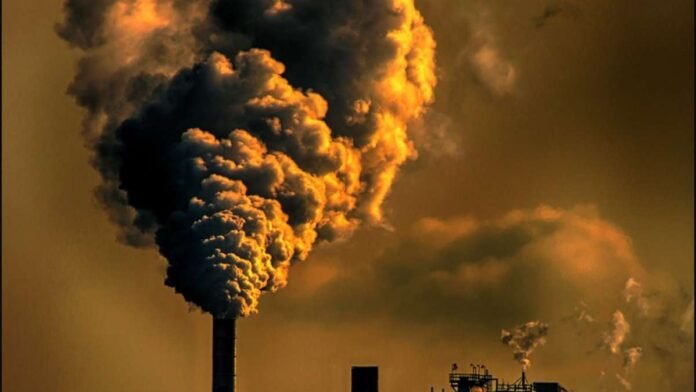India reduced GDP emission intensity by 33% between 2005 and 2019, meeting its goal 11 years early. Annual GDP growth was 7%, but emissions were 4%.
India cut GDP emission intensity by 33% between 2005 and 2019, meeting the goal 11 years early, according to a government assessment.
The poll also revealed that India’s GDP grew by 7% while its emissions rose by 4%, proving that the country has decoupled economic growth from greenhouse gas emissions.
The UNFCCC will receive ‘The Third National Communication to the United Nations Framework Convention on Climate Change’ at climate talks in Dubai, officials said.
National communications cover greenhouse gas emissions, climate change vulnerability, mitigation, and adaptation.
Environment Minister Bhupender Yadav said India reduced GDP emission intensity by 33% between 2005 and 2019 to meet its target 11 years early. India added 1.97 billion tons of CO2 to its carbon sink.
Overall emissions—including land use, land-use change, and forestry—rose 4.56% from 2016.
Economic emission intensity is greenhouse gas emissions per GDP growth. This differs from absolute emissions.
“We are well on track to achieve the target of reducing our GDP emissions intensity by 45 per cent by 2030, compared to the 2005 level, and of creation of additional carbon sink of 2.5 to 3.0 billion tonnes through tree and forest cover by 2030,” stated.
Any nation’s NDCs aim to keep the earth’s average temperature rise below 2°C and preferably 1.5°C above pre-industrial (19850-1900) levels.
Overstepping the 1.5°C guardrail will increase heat/cold waves, floods, cyclones, severe rains, glacier melting, and sea level rise, scientists say.
The third national communication found that energy (75.81%) had the most anthropogenic emissions, followed by agriculture (13.44%), industrial process and product use (8.41%), and garbage (2.34%).
The LULUCF sector cut 4,85,472 GgCO2e.
2.6 billion tons of CO2e were emitted by India in 2019.
India filed a 2019 or later GHG inventory-based national communication with 26 other developing nations. China updated their GHG inventory in 2014, Brazil in 2016, South Africa in 2017, and Saudi Arabia in 2012.
Prime Minister Narendra Modi offered hosting the 2028 UN climate talks in India on Friday, noting India’s early NDC target achievement.
After the G20 Summit, India’s next significant global conference is COP33 in 2028.
In 2002, New Delhi hosted COP8, however it was small compared to its present splendor.
Modi said that India emits less than 4% of carbon while having 17% of the world’s population.
“India is one of the very few economies in the world that is on track to achieve its NDC targets,” said.
Indian emissions intensity-related and non-fossil fuel targets were met 11 and 9 years early.
Country plans to lower GDP emission intensity by 45% from 2005 levels and get 50% of power from non-fossil fuels by 2030. Dedicated to a net zero economy by 2070.
The prime minister criticized wealthier nations at COP28, saying a small group has indiscriminately destroyed nature for a century, but everyone is suffering, especially the Global South.
He stated climate change disproportionately affects poor and developing nations notwithstanding their small contributions.
Conclusion
India reduced 2005–2019 GDP emission intensity by 33% 11 years early. Though GDP rose 7% annually, emissions only rose 4%, showing greenhouse gas decoupling. Environment Minister Bhupender Yadav said India will lower GDP emissions intensity by 45% by 2030 and create a 2.5–3.0 billion-tonne carbon sink through trees and forests. India submitted a 2019 GHG inventory-based national communication with 26 other developing nations. Narendra Modi proposed hosting COP33 in India in 2028 to highlight India as a climate leader.



